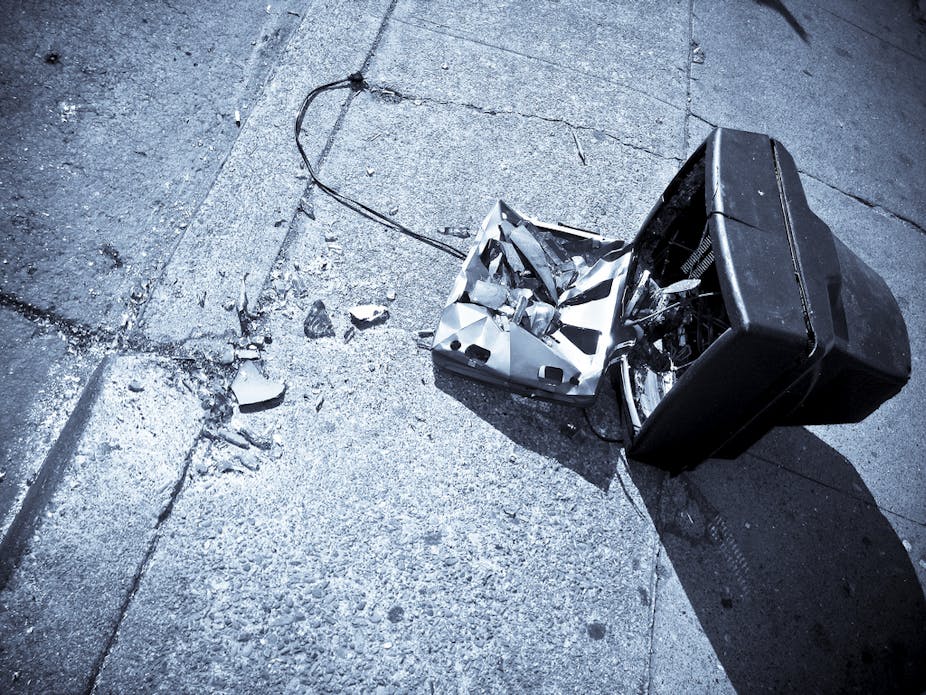The carbon tax was not the only significant piece of environmental legislation to come into law recently. The Australian government’s Product Stewardship Act paves the way for a comprehensive solution to the waste generated through the production, consumption and disposal of material goods.
The Act aims to reduce the environmental impact of the these goods, setting ambitious targets for the recycling of products that we use every day.
We make a lot of waste - could we turn it into a resource?
The benefits of capturing waste that would otherwise go to landfill are difficult to overstate. Our total waste generation has increased significantly in the past decade. We now send over 2,000kg of solid waste per person every year to landfill. Many of the landfills that serve our largest population centers are nearing their capacity. New sites will have to be developed, or waste transported further away at even greater cost.
There is an emerging recognition in government and industry that waste is a resource to be utilised, not just dumped into landfill. The price of raw commodities and fossil fuels is expected to increase in the future, so it makes sense to recover materials and re-incorporate them into new products.
In the future, recycling is likely to become more than just how we “do our bit for the environment”. Increasingly, it will be an economic imperative. Recovering commodities from products such as mobile phones can save substantial greenhouse gas emissions when compared to mining and extracting those same materials to produce new products.
A manufacturer-pays recycling system
The first group of products the new legislation acts on is “e-waste” – televisions, computers, printers and peripherals (mobile phones are already covered by another scheme). These will be regulated by the National Television and Computer Recycling Scheme.
Importers and domestic manufacturers of these goods will have to pay a small levy on each good. This will then be used to ensure that these products are recovered and recycled in a safe and responsible way.
Households and small businesses can dispose of items for free. There will be certified, permanent e-waste drop-off points in all metropolitan areas. Frequent e-waste collections will be run in remote areas where there is insufficient input to justify a permanent fixture.
The scheme is anticipated to recycle 30% of e-waste in 2012-2013, increasing to 80% in 2021-2022. But it remains to be seen whether the scheme will generate the levels of voluntary household recycling participation that are expected.
We recycle now, but only because it’s easy
Household participation for glass, paper and plastics recycling is high, but this is because the recycling systems are closely integrated with “general” household waste, significant infrastructure (a bin) is provided, and there are scheduled pick-ups for each and every household.
No such infrastructure is expected for the disposal of e-waste: householders will have to take their e-waste to a drop-off point themselves. It appears that households are expected to participate without any particular incentive other than social or environmental goodwill. This type of “green awareness” is building throughout the community, but behaviour change research suggests it can’t be relied on as the sole motivation for proper e-waste recycling.
Ideally, households would be provided with some incentives to recycle. This could avoid e-waste contaminating the general waste stream, and help recover valuable commodities.
The scheme focuses on recycling as the best way to deal with the exponentially increasing amount of e-waste that we generate. This is consistent with other government waste policies for landfill minimisation.
Is recycling the best approach?
State-mandated waste management targets administered by local governments overwhelmingly focus on recycling as the primary method for diverting waste from landfill. Although recycling is obviously preferable to dumping in landfill, there are other waste management practices which may be marginalised as a result.
For instance, communities with successful waste management strategies (such as reuse and repair centres) operating outside the formal arrangements of the municipal authorities may produce less per capita waste material overall. Yet these waste reduction measures would not be reflected in a system that measures success solely by the amount of material recycled.
This is regrettable since, in most cases, reusing products is a more efficient and less-costly way of reducing waste than recycling. Most government waste management strategies say reduction and reuse are preferable to recycling. But these strategies don’t reflect that hierarchy.
Communities that work hard to reuse and repair products before they even need to be recycled should be recognised in Australia’s approach to product stewardship. And with our waste (and e-waste) generation rising every year, the sooner we made the change, the better.

